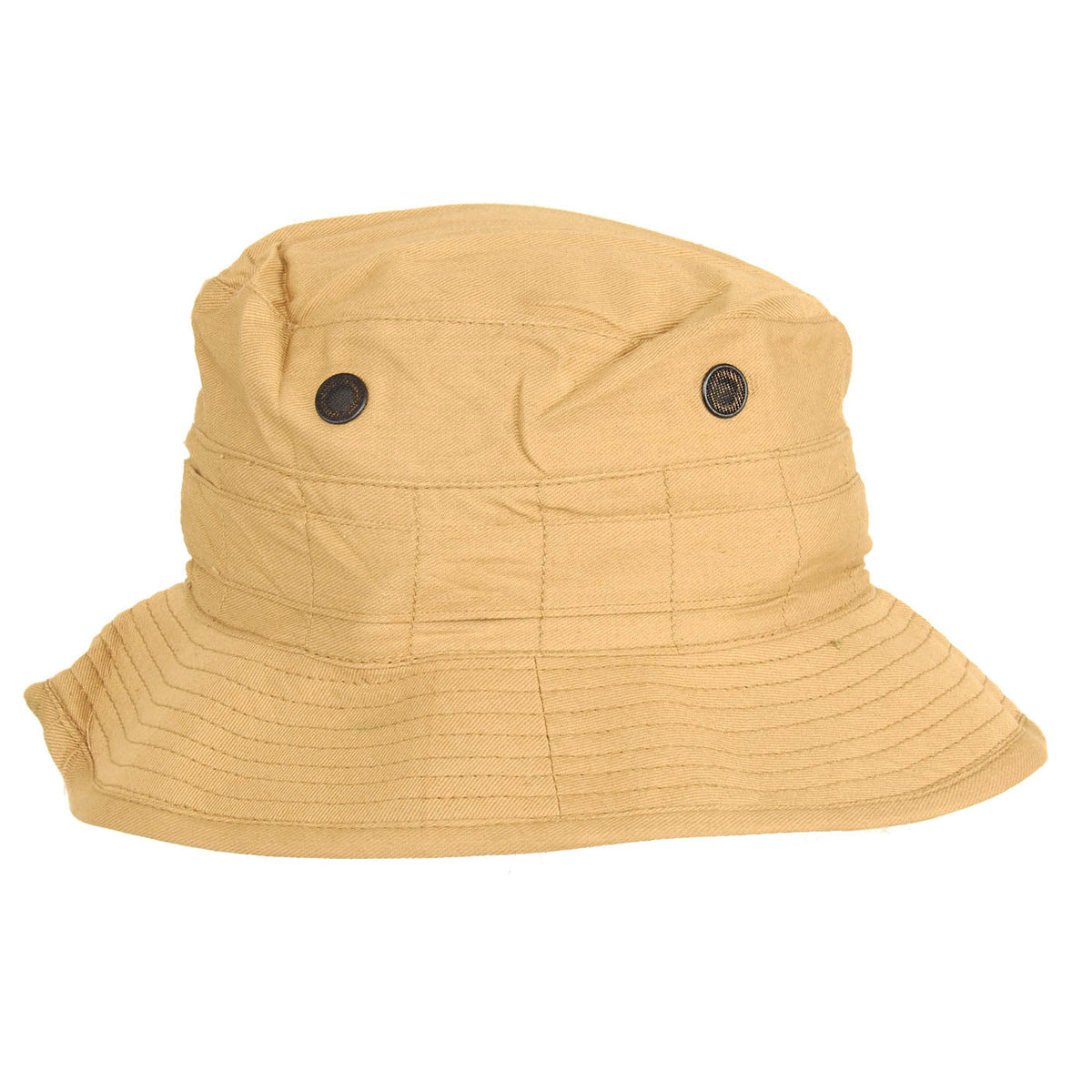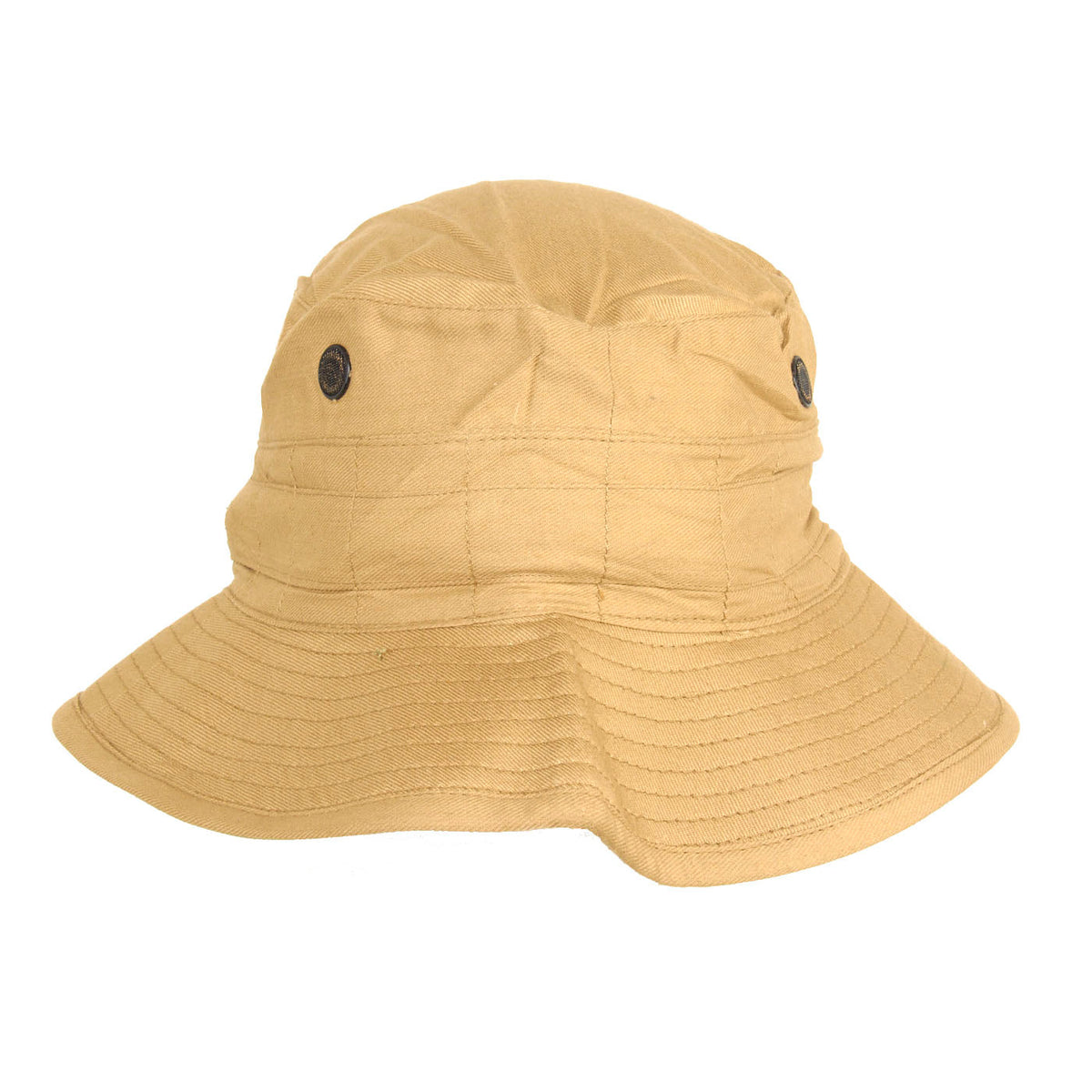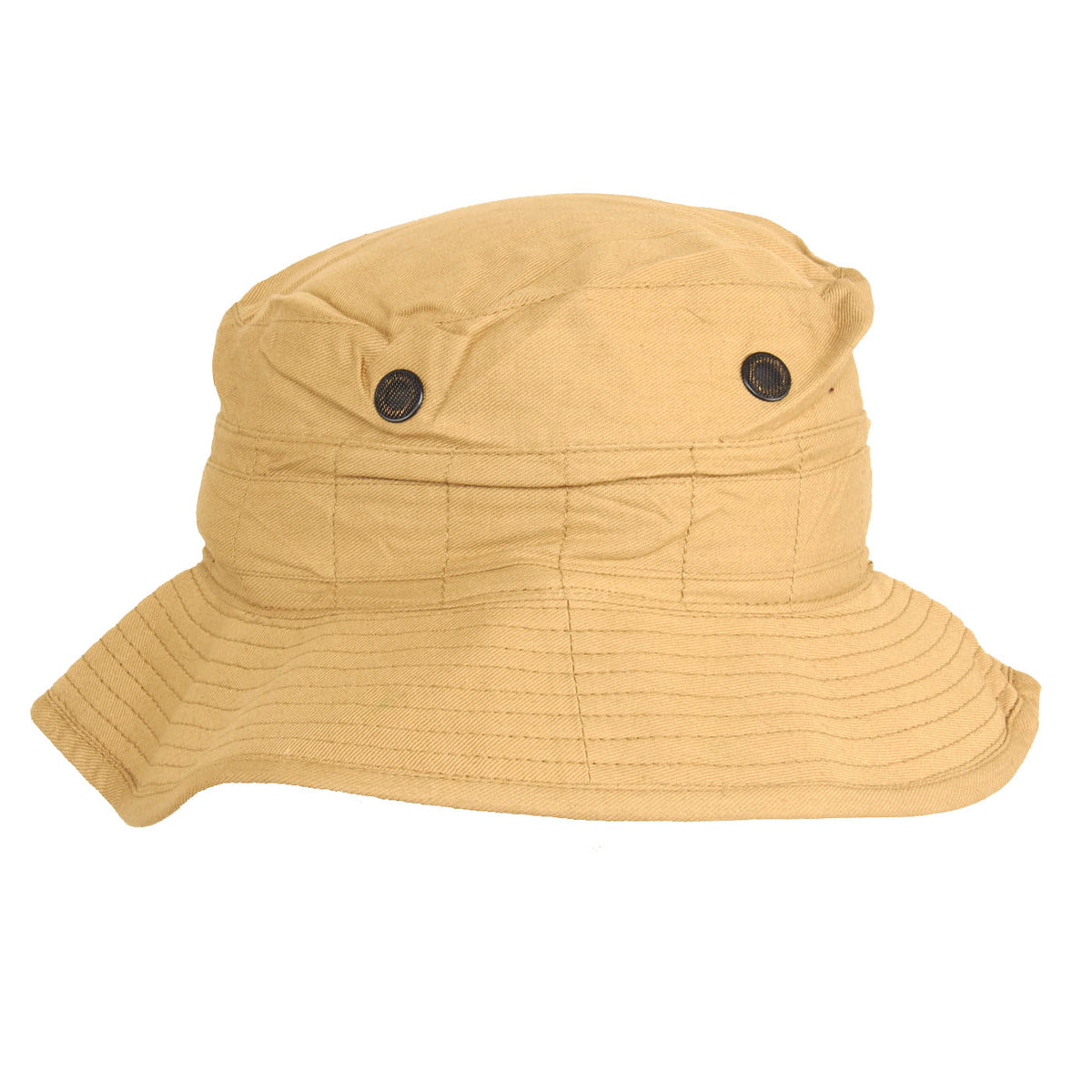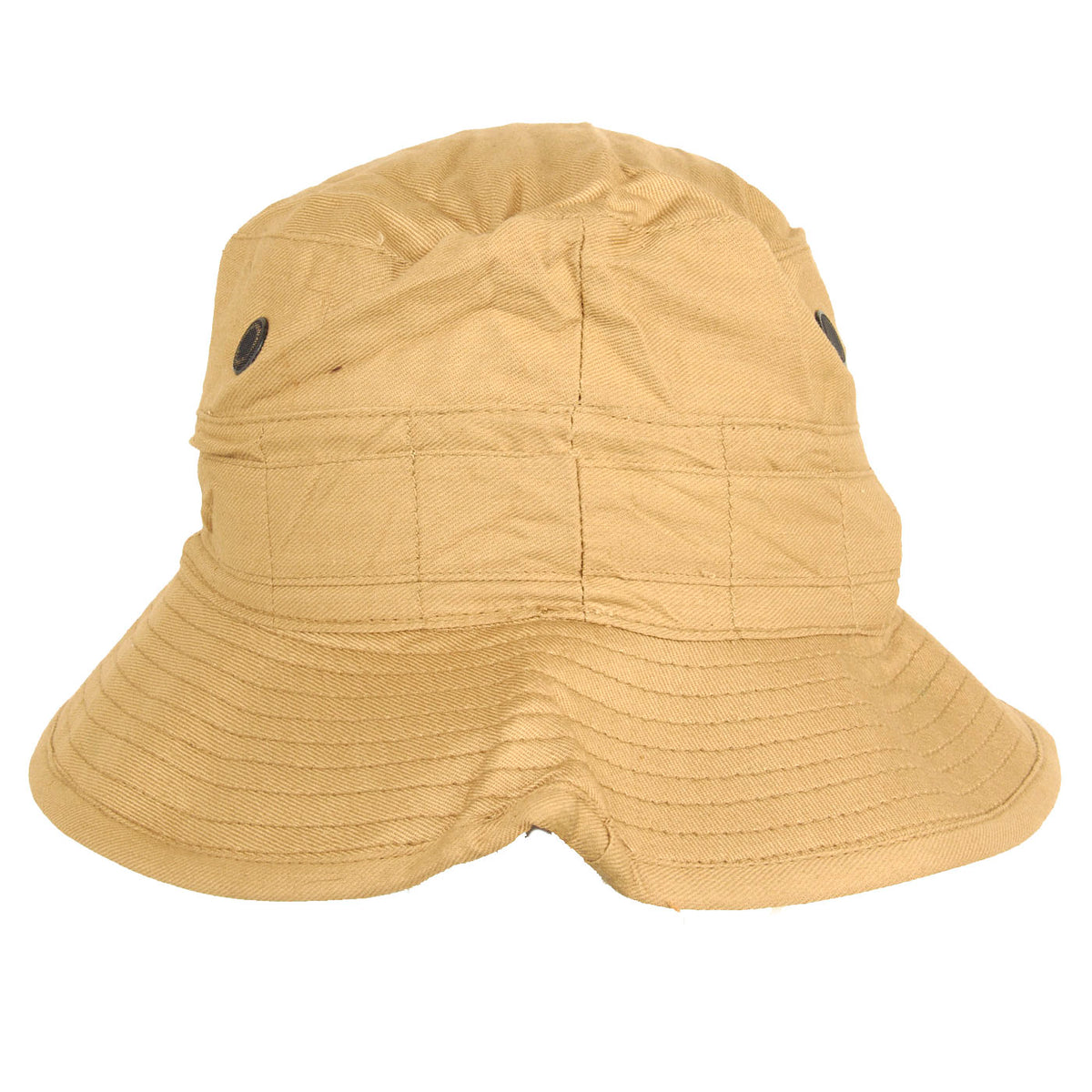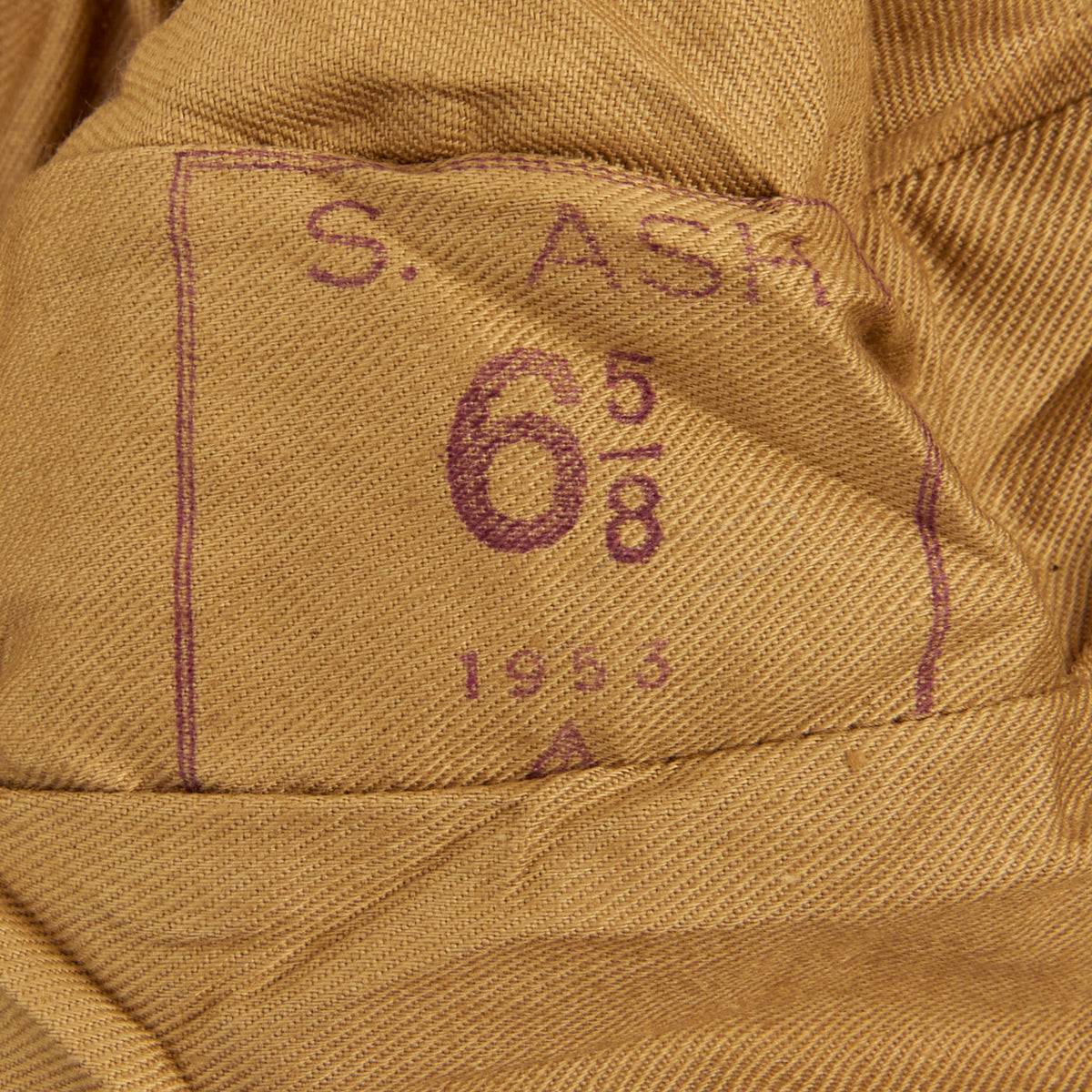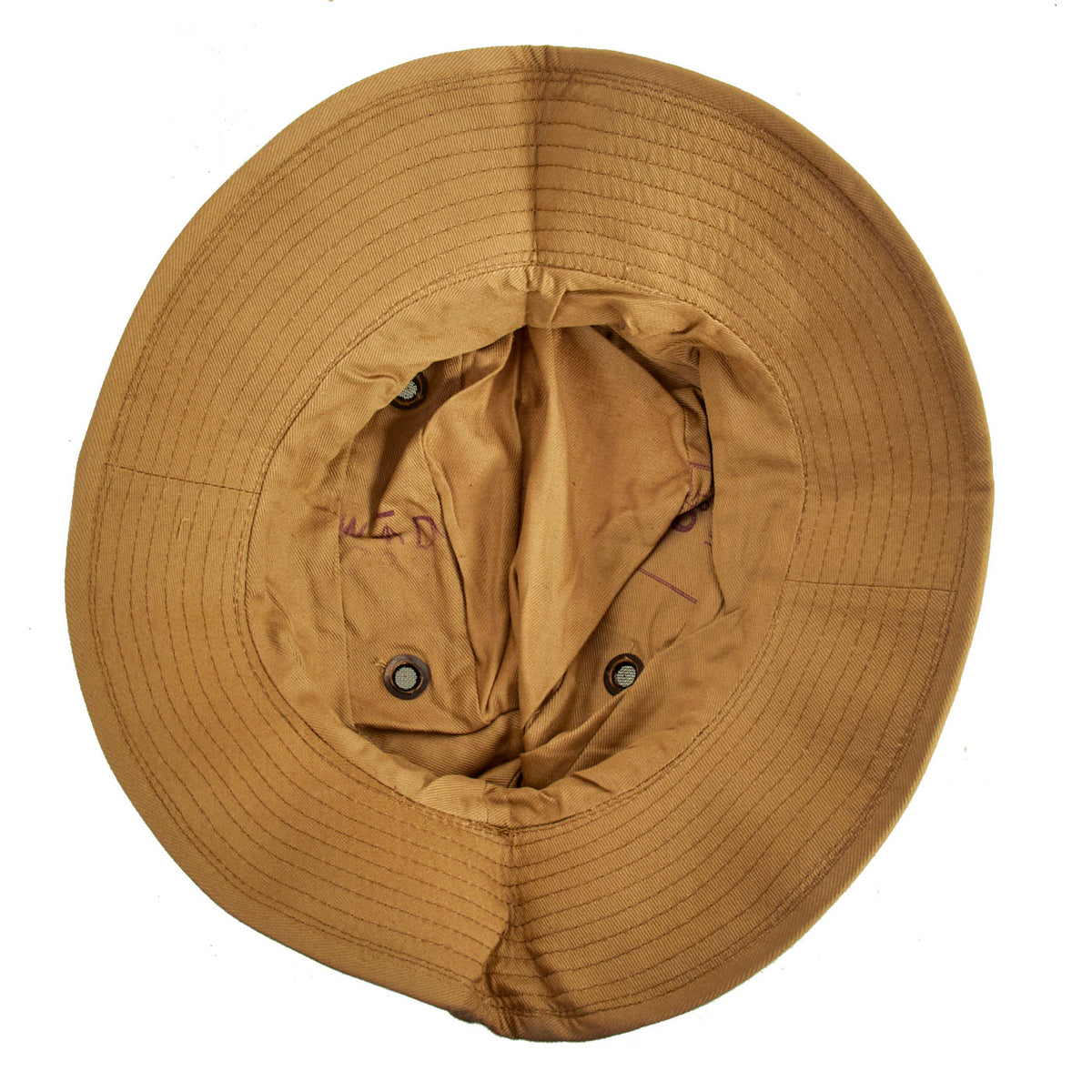Original British Maylayan Emergency Era Tropical Boonie Hat – Unissued Original Items
$ 19,95 $ 11,97
Original Items: Limited Quantity Available. These are all wonderful, unissued examples of early 1950s examples of the British Khaki Tropical Boonie Hat. This is the typical boonie that was issued to British and Commonwealth forces in the tropical climate of British Maylaya as well as early Vietnam. Sizes are all very small, marked either 6 ½” or 6 ⅝”.
Get one before they run out!
The Malayan Emergency, also known as the Anti–British National Liberation War (1948–1960), was a guerrilla war fought in British Malaya between communist pro-independence fighters of the Malayan National Liberation Army (MNLA) and the military forces of the British Empire and Commonwealth. The communists fought to win independence for Malaya from the British Empire and to establish a socialist economy, while the Commonwealth forces fought to combat communism and protect British economic and colonial interests. The conflict was called the “Anti–British National Liberation War” by the MNLA, but an “Emergency” by the British, as London-based insurers would not have paid out in instances of civil wars.
On 17 June 1948, Britain declared a state of emergency in Malaya following attacks on plantations, which in turn were revenge attacks for the killing of left-wing activists. Leader of the Malayan Communist Party (MCP) Chin Peng and his allies fled into the jungles and formed the MNLA to wage a war for national liberation against British colonial rule. Many MNLA fighters were former members of the Malayan Peoples’ Anti-Japanese Army (MPAJA), a communist guerrilla army previously trained, armed and funded by the British to fight against Japan during World War II. The communists gained support from a high number of Malaysians, mainly those from the Chinese community.
After establishing a series of jungle bases the MNLA began raiding British colonial police and military installations. Tin mines and rubber plantations were attacked by the MNLA to gain independence for Malaya by bankrupting the British occupation. The British attempted to starve the MNLA using scorched earth policies through food rationing, the killing of livestock, and the aerial spraying of herbicides including Agent Orange. British attempts to defeat the communists included extrajudicial killings of unarmed villagers, in violation of the Geneva Conventions. The most infamous example is the Batang Kali massacre, which the British press have referred to as “Britain’s Mỹ Lai”. The Briggs Plan forcibly relocated 400,000 to one million civilians into concentration camps, which were referred to by the British as “New villages”. Many Orang Asli indigenous communities were also targeted for internment because the British believed that they were supporting the communists. The communists’ belief in class consciousness, and both ethnic and gender equality, inspired many women and indigenous people to join both the MNLA and its undercover supply network the Min Yuen.
Although the emergency was declared over in 1960, communist leader Chin Peng renewed the insurgency against the Malaysian government in 1967. This second phase of the insurgency lasted until 1989.
Fast Shipping with Professional Packaging
Thanks to our longstanding association with UPS FedEx DHL, and other major international carriers, we are able to provide a range of shipping options. Our warehouse staff is expertly trained and will wrap your products according to our exact and precise specifications. Prior to shipping, your goods will be thoroughly examined and securely secured. We ship to thousands clients each day across multiple countries. This shows how we're dedicated to be the largest retailer on the internet. Warehouses and distribution centres can be located throughout Europe as well as the USA.
Note: Orders with more than one item will be assigned a processing date depending on the item.
Before shipping before shipping, we'll conduct a thorough inspection of the items you have ordered. Today, the majority of orders will be delivered within 48 hours. The delivery time will be between 3-7 days.
Returns
The stock is dynamic and we cannot completely manage it because multiple stakeholders are involved, including our factory and warehouse. So the actual stock may alter at any time. It's possible that you may not receive your order once the order has been made.
Our policy is valid for a period of 30 days. If you don't receive the product within 30 days, we are not able to issue a refund or an exchange.
You can only return an item if it is unused and in the same state as the day you received it. You must have the item in its original packaging.
Related products
Uncategorized
Uncategorized
Uncategorized
Uncategorized
Uncategorized
Uncategorized
Uncategorized
Uncategorized
Uncategorized
Uncategorized
Armoured Fighting Vehicles of the World: AFVs of World War One (Hardcover Book) New Made Items
Uncategorized
Uncategorized
Uncategorized
Uncategorized
Uncategorized
Uncategorized
